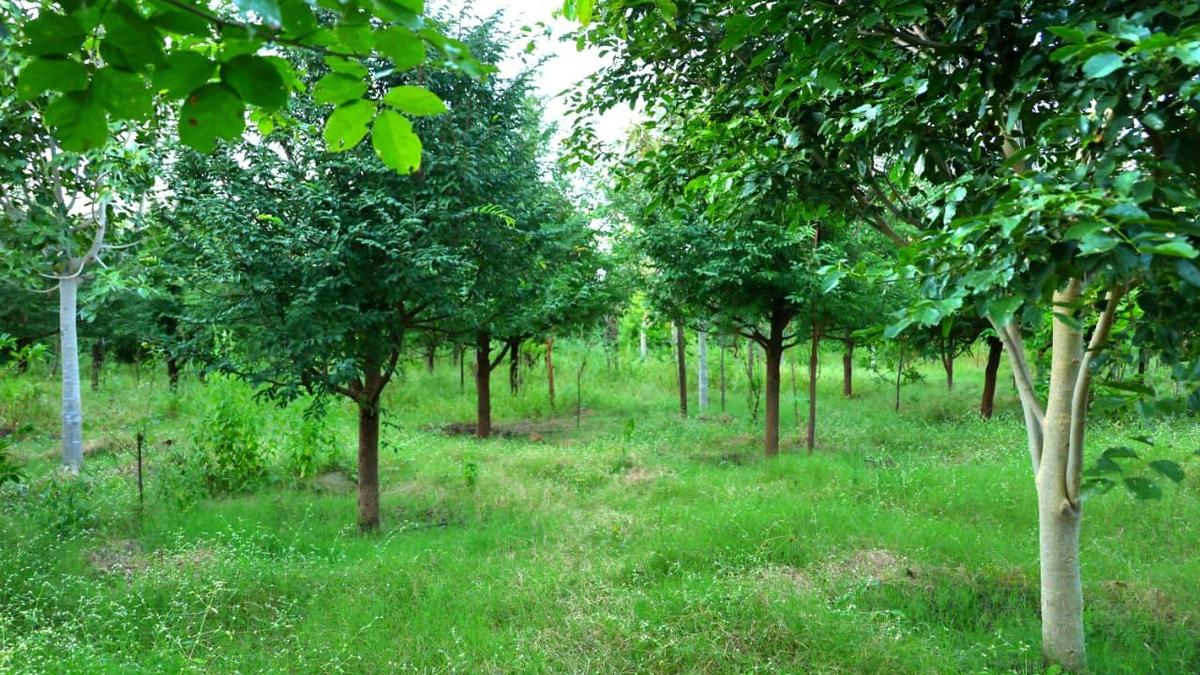Copyright thehindu

Divya, who moved from Mandya to Vijayapura over 10 years ago as her husband got a posting there, had a tough time coping with the hot weather and dusty environment. She was keen to shift out as she used to frequently face problems like nose bleeding due to high temperature. But now she feels that Vijayapura is “bearable” and that there is some positive change in the weather. Like Divya, a large number of local people feel that there is some positive change in the environment. A “green revolution” of sorts has unfolded in Vijayapura, marking a significant increase in green cover as over 1.5 crore saplings have been planted in different parts of the district in the last nine years. The process has been sustainable as it involves not just the government, but various organisations and people from different walks of life. Significant increase The initiative has pushed up the forest cover of this district from the earlier 0.17% to 2.40% of the total land area, according to Vijayapura district in-charge Minister M. B. Patil, who spearheaded the campaign. “After this initiative, Vijayapura has secured the third position in the country for good air quality. The groundwater level has increased and soil fertility has improved. The average temperature has dropped by 0.5°C, while annual rainfall has risen from 550 mm to about 650 mm. The number of rainy days in the district too has increased from 20 to 30 days to nearly 40 days a year,” claimed the Minister. Encouraged by this, now a new target of planting an additional 3.5 crore saplings by 2030 has been set to take the total number of plants to 5 crore, according to him. “When I was the district in-charge Minister in the previous term (around 2015), a subject related to forest cover came up during the Karnataka Development Project meeting, and I casually enquired with the forest officials about the national, State average and Vijayapura’s position with respect to forest cover. I was informed that Vijayapura district had a meagre 0.17% forest cover as against the national average of 30% and a range of 15% to 20% in some States. Shocked, I started thinking seriously about increasing the green cover,” Mr. Patil says. The parched condition of the district, despite being a land of five rivers, was one of the reasons for the low forest cover. However, the district got about 85 tmcft of Krishna waters and the water had started reaching most of the farmers’ fields in the command areas due to completion of some pending works. Using this, several tanks were filled which helped in improving groundwater table. Taking advantage of water availability, “Koti Vruksha Abhiyan” (campaign for crore saplings) was launched through the district administration in 2016. Initially, it was planned to plant 10 lakh saplings a year for five years and 165 varieties of plants that would suit the local conditions were chosen. It soon became a people’s movement as more than 20 organisations became part of it and common people, including farmers, joined hands. The highlight of this initiative is that the saplings were not only planted on difficult terrains, but their survival was ensured by installing solar-powered drip irrigation system.



